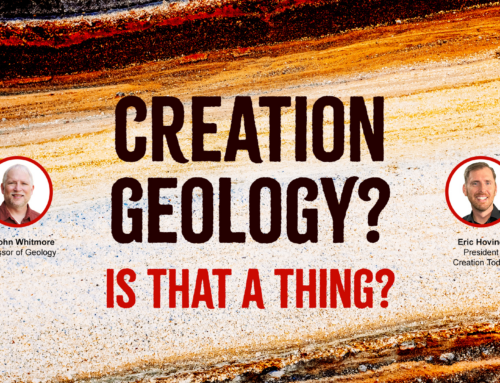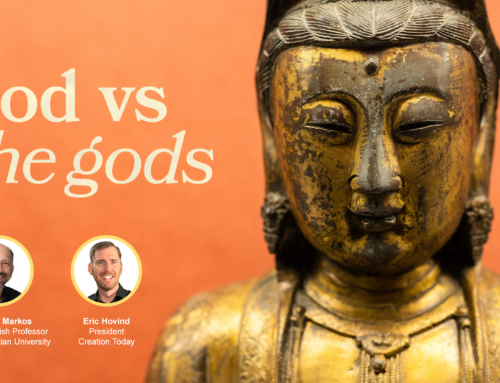Q: Biology textbooks often say, “Billions of years ago the earth’s atmosphere was very different.” Is this true?
A: No, this is not true, but let me explain why it is important to the evolution of life. Of the six meanings of the word, they are now dealing with number four (organic evolution). Getting life from chemicals is not as easy as they make it sound. They make it sound like a recipe for a cake. “Just get all the ingredients together and add energy.”
Chemicals + Energy ≠Life
If that’s true, blend a frog in a blender for thirty seconds on “liquefy.” Now that you have all the chemicals to make a frog in one location (in exactly the right amount, by the way), add energy and see what happens. You can zap your “frog-nog” with electricity, nuke it in the microwave, or drop in an atomic bomb. No amount of added time or energy will reassemble the frog and make it come alive! Life is more than chemicals plus energy.
No evolution with or without oxygen
One big problem the theory has is with oxygen. Probably the book says that the earth had a “reducing atmosphere.” That means the air had no oxygen. They have to believe that, because any amino acids that formed would have been quickly oxidized otherwise. Oxygen would stop the process before it really got started. Life can’t even get started “evolving” without oxygen present. However, the problem with leaving out oxygen is that ozone is made from oxygen; so there would be no ozone layer to stop ultraviolet light in this imaginary atmosphere “billions of years ago.” Since ultraviolet light destroys ammonia (one of the key gases that they need), there would be no way life could get started without oxygen.
Things to consider
Here are some observations to consider:
- Life cannot evolve with oxygen.
- Life cannot evolve without oxygen.
- The many experiments to try to make life in the last fifty-five years have all ended in failure. Science is nowhere close to creating life.
- All experiments demonstrate that we are even further from creating life than imagined.
- Evidence shows that the earth has always had oxygen, even more than today.
Quotes
These quotes may help (see Creation Seminar part 4B):
In general, we find no evidence in the sedimentary distribution of carbon, sulfur, uranium, or iron, that an oxygen-free atmosphere has existed at any time during the span of geological history recorded in well preserved sedimentary rocks.1
It is suggested that from the time of the earliest dated rocks at 3.7 (billion years) ago, Earth had an oxygenic atmosphere.2
The only trend in recent literature is the suggestion of far more oxygen in the early atmosphere than anyone imagined.3
Primordial Air may have been “breathable.” The Earth may have had an oxygen-rich atmosphere as long ago as three billion years and possibly even earlier, three leading geologists claimed.4
Life does not come from non-life
There are still textbooks and teachers claiming that science has proven that life can start from chemicals. Could it be that this outmoded idea is clung to because the only other alternative is that God made life? Famous scientists like Redi, Pasteur, and Spallanzani proved years ago that life does not come from non-life.
- Erich Dimroth and Michael M. Kimberely, “Precambrian Atmospheric Oxygen: Evidence in the Sedimentary Distributions of Carbon, Sulfur, Uranium, and Iron,” Canadian Journal of Earth Science 13, no. 9 (September 1976): 1161-1185. ↩
- Harry Clemmey and Nick Badham, “Oxygen in the Precambrian Atmosphere: An Evaluation of the Geological Evidence,” Geology, 10, no. 3, (March 1982): 141. ↩
- Charles Thaxton, Walter Bradley, and Roger Olsen, The Mystery of Life’s Origin (Dallas: Lewis and Stanley, 1992), 80. ↩
- Commonwealth Scientific and Industrial Research finds that “Primordial Air May Have Been Breathable,” SpaceDaily, January 11, 2002 (http://www.spacedaily.com/news/early-earth-02a.html). ↩








